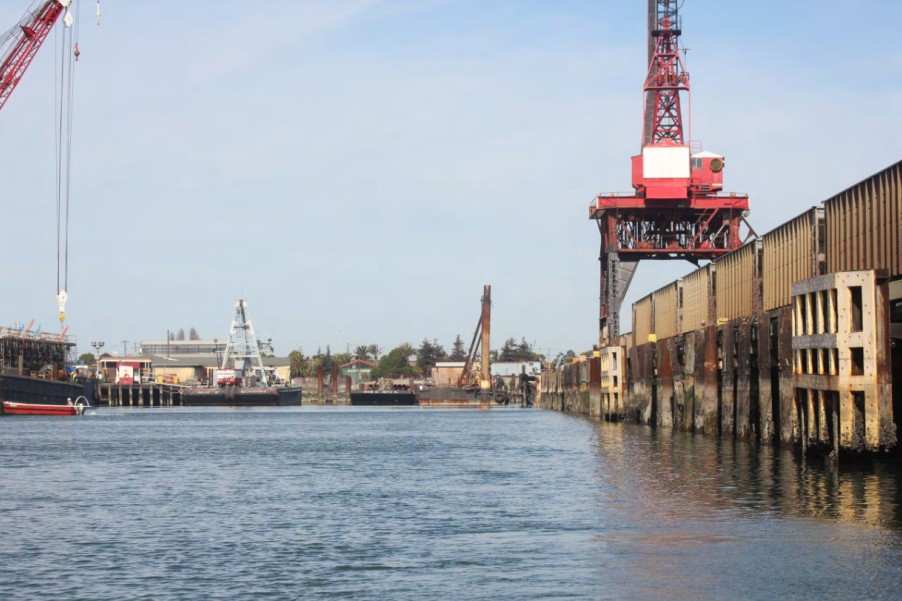
RICHMOND — Renewed efforts to clear toxic pesticides from a Richmond waterway are creating divisions between local environmental groups and the Environmental Protection Agency, which previously attempted to clean the site in the 1990s.
Related Articles
San Mateo County navigates immigrant fears as it attempts to improve water issues
Scientists solve mystery of what’s killing billions of starfish off California and the West Coast
Free air conditioner programs help amid life-threatening heat
Marin’s marine health-care system restores another patient
As AI power needs surge, a Bay Area data center bets on hydrogen as a sustainable alternative
The United Heckathorn Superfund Site spans 5 acres of land and 15 acres of marine sediments in Richmond Harbor’s Lauritzen Channel and Parr Canal. It was contaminated between 1947 and 1966 when multiple companies made, packaged and shipped pesticides in the area.
After being designated as a polluted area in need of decontamination in 1990, the EPA spent the decade removing 111,300 cubic yards of contaminated soil and placing a concrete and asphalt cap over the former Heckathorn plant site.
The agency initially believed the project was successful, but by 2001 they found that pesticide levels in the marine area remained elevated above cleanup goals.
More than two decades later, the contamination persists. Reviews performed every five years have reaffirmed that toxins remain higher than expected after remediation. Fish and mussels have also tested positive for toxins, prompting a “do-not-eat” advisory in an area not far from a fishing pier near the Richmond Ferry system and Craneway Pavilion.
The EPA began hosting community meetings this year that are meant to gather public feedback that could influence future cleanup plans of the Heckathorn.
Those meetings follow local pressure, said Janet Johnson with Richmond Shoreline Alliance, an environmental nonprofit. She said she and others in the community were contacted by the EPA about the site about a year ago.
“Talk about your red flags,” Johnson said.
Since then, a “working group” of representatives with the Sierra Club and San Francisco Baykeeper have been meeting with the EPA to organize the series of six community meetings, Johnson said.
The first four meetings haven’t gone as hoped, Johnson said. Though “friendly,” Johnson said EPA project planners and experts have been tight-lipped about sharing their professional opinions during planning and public meetings, which she believes comes from the Trump administration.
During a July 29 meeting, which was meant to focus on remediation methods that could be used to clear the pesticides, participants grew frustrated after pointing out some methods didn’t apply to the Heckathorn site.
“It’s clear that they have serious constraints,” said Johnson, who has worked with other government agencies and been in meetings with different EPA personnel in the past.
Budget cuts and rolled-back regulations have been instituted at the EPA since President Donald Trump took office, although work around superfund sites has continued. Johnson said it’s possible some projects are funded by those responsible for the pollution, not the federal government.
EPA spokeswoman Mikayla Rumph, in a statement, said the agency “adheres to the ‘polluter pays’ principle,” but can’t currently comment on who the responsible parties will be for the Richmond site.
The EPA will “seek legal agreements with responsible parties to fund the cleanup,” Rumph said. “If the EPA reaches a settlement with potentially responsible parties to pay for the cleanup work, the State of California is not responsible for sharing the costs of cleanup. The United Heckathorn Superfund Site cleanup is continuing as expected.”
Johnson said the EPA has agreed to bring on a technical advisor to help facilitate the process. The working group is also pushing the EPA to give the public a 90-day window to comment on the proposed cleanup plan once it’s released. The EPA, which normally offers a 30-day comment period, said they’d expand that to 60 days, Johnson said.
Exactly how the EPA plans to remove the toxins from the area isn’t yet known. A draft plan is expected to be released later this year or early 2026. But one key issue already divides the federal agency and local environmental groups.
Local groups want the water in Lauritzen Channel drained before sediment is removed to prevent toxins from spreading during the process, Johnson said. Draining the channel isn’t currently being considered, EPA representatives said during the July 29 meeting.
Johnson said the working group plans to rally support for their vision, which they’ve drafted and begun sharing with the public.
“The failure of past remediation efforts underscores the need for a lasting solution,” read a proposed cleanup plan drafted by the Richmond Shoreline Alliance. “A full cleanup is imperative to resolve the problem at its source and avoid compounding consequences later.”